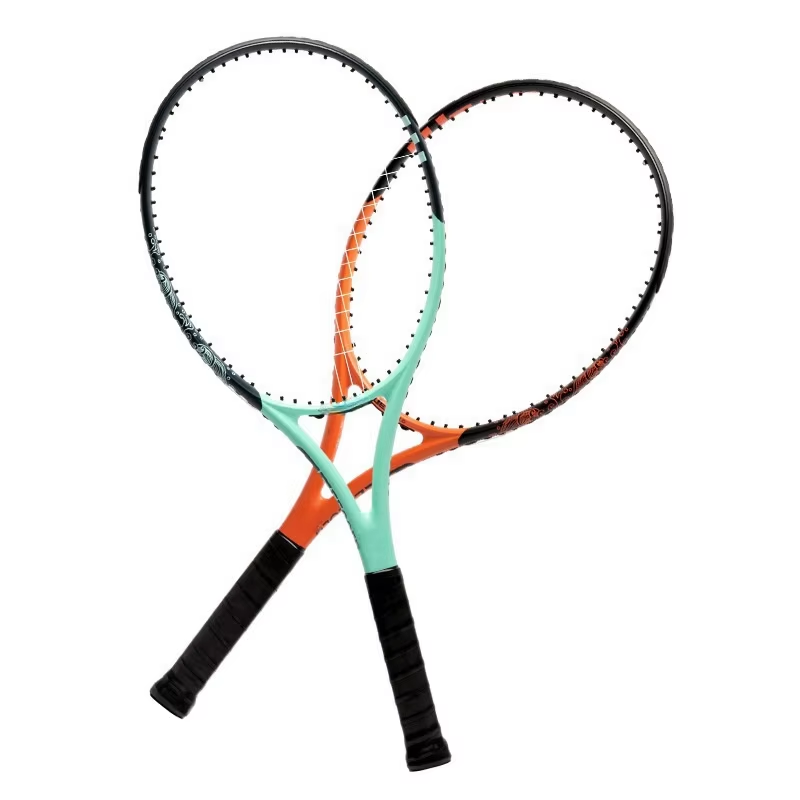After every game, your badminton racket picks up sweat, dust, and even small bits of dirt—all of which can damage its material over time if left unchecked. Sweat, in particular, has salts that can corrode the racket’s frame (especially if it’s made of aluminum or carbon fiber) and weaken the string bed. So, make cleaning a quick post-game habit. Grab a soft, dry cloth first to wipe down the entire frame and strings—this gets rid of surface dust and excess sweat. If there’s stubborn grime, dampen the cloth with a little mild soapy water (avoid harsh detergents, as they can strip the racket’s protective coating) and gently wipe the affected areas. Once you’re done, dry the racket thoroughly, especially around the string holes and frame joints—moisture trapped here can lead to rust or mold. Regular cleaning doesn’t just keep your racket looking new; it also preserves its structural integrity, so it holds up better over years of use.
The string bed is one of the most fragile parts of your badminton racket—and it’s also the most critical for your game. A worn or broken string doesn’t just ruin your shots; it can also cause the racket frame to warp if left unfixed. First, pay attention to string tension. Over time, strings lose their elasticity, which affects your control and power. If you notice your shots feel “dead” or the strings look loose, it’s time to restring—most casual players need to restring every 3-6 months, while frequent players might need it more often. Also, avoid hitting the shuttlecock too close to the racket frame (known as “frame hits”). These hits put extra pressure on the strings and frame, increasing the risk of string breakage and frame cracks. After each game, check the strings for fraying or small cuts—catching these early can prevent sudden breakage during a match. Taking care of the string bed keeps your racket performing well and avoids unnecessary damage to the frame.
How you store your badminton racket when it’s not in use has a big impact on its lifespan. First, avoid extreme temperatures—don’t leave it in a hot car (where the frame can expand and the strings can lose tension) or a freezing garage (which can make the frame brittle). Humidity is another enemy: damp environments can cause the frame to rust (especially metal parts) and the strings to mildew. The best place to store your racket is in a cool, dry area—like a closet inside your home. Always use a racket cover, too. A padded cover protects the frame from scratches and minor impacts when you’re transporting it to the court, and it also keeps dust and moisture away when it’s stored. Never stack heavy objects on top of your racket, as this can bend the frame or stretch the strings. If you have multiple rackets, store them upright (using a racket stand) instead of leaning them against a wall—leaning can put uneven pressure on the frame and cause it to warp over time. Proper storage keeps your racket in ready-to-use condition, so it’s always reliable when you step onto the court.
Even with regular cleaning and proper storage, your racket can still get damaged if you use it carelessly. One common mistake is using the racket to pick up shuttlecocks from the ground—this scrapes the frame against the floor, removing its protective coating and exposing the material to damage. Instead, bend down to pick up shuttlecocks, or use a shuttlecock picker if you have one. Another thing to avoid is hitting hard surfaces (like walls or the court floor) with the racket—even a small impact can cause tiny cracks in the frame, which can grow bigger with repeated use. Also, make sure you’re using the right racket for your skill level. A racket that’s too light or too flexible for aggressive play might break easily, while a heavy, stiff racket can cause strain on your arm and also wear out faster if you’re not used to it. Finally, check your racket for damage regularly—look for cracks in the frame, loose string holes, or frayed strings. Fixing small issues early can save you from having to replace the entire racket later.
Maintaining your badminton racket for long-term use doesn’t have to be complicated—it just takes small, consistent habits. By cleaning your racket after every game, taking care of the string bed, storing it properly, and avoiding unnecessary wear and tear, you can keep your racket in top shape for years. Not only does this save you money (you won’t have to buy a new racket as often), but it also ensures your racket performs well every time you play—helping you hit better shots and enjoy the game more. A well-maintained racket is a reliable partner on the court, so investing a little time in its care goes a long way.

